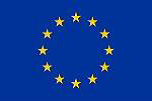I wrote a blog post on the challenges we have faced during the development of the EduMAP IDSS back in April. A lot has happened since. Many of the original challenges have been solved, some stubborn ones have stayed, and as is to be expected, some new ones have occurred. I won’t bother you with all of them, but instead I want to underline some crucial points we have accomplished. The main target was to combine suitable datasheets from different fields in order to make the IDSS plausible. That meant gathering various kinds of quantitative data from different sources in the first place.
The first version of the EduMAP IDSS prototype was published to a limited audience in October. Since then we have been busy developing it and making it better in many ways and the current version of the system has gone through various testing periods. The core of the systems lies in the Recommendations section, where we provide recommendations for future educational choices based on users’ selections of the target group.
The EduMAP IDSS offers a list of qualifications that may be sorted by admission percentage, working days, employment rate, student feedback etc. The student feedback is a demo feature that illustrates the possibilities this kind of a system could offer. Within the EduMAP IDSS the student feedback is included in the same website. In a future production version, the feedback would be a separate system connected to the IDSS with an application programme interface or by many of them.
The EduMAP project is not all about quantitative data. As you might have already realised, many outcomes of the project have dealt with qualitative issues, like for instance active participatory citizenship and different sorts of good practices in different fields of adult education. We have kept asking ourselves, how to combine this kind of data with numbers and statistics.
There are dozens of good practices unearthed and gathered by EduMAP researches from all over Europe. Right now, roughly half of them have been added to the EduMAP IDSS as data sheets in the Recommendations section to provide more insight on the situation according to the user’s selections of the target group. For instance, if a user has selected (with Finnish data) prior education to “no basic education”, a list with possible qualifications as well as two different good practices from Finland are provided: VALMA and Virtual School. In addition, some other good practices from other countries may be provided, if they meet with the selections.
The EduMAP IDSS developed in this project stays a prototype. We have already proved it has a lot of potential and it could be further developed to meet the requirements of an ever-changing world of adult education with even more complex data from different sources and countries.
Mikael Andolin,
Development Manager, Foredata Ltd.



[…] to improve outreach to vulnerable groups – clearly plays a significant role. I could see with the Intelligence decision support system (IDSS) prototype that they have developed, an interesting and inspiring case study for a new […]
How access and collection of data, resource management and related competences can provide insights to improve the quality and efficiency of adult education provisions to vulnerable groups | EduMAP
20.2.2019 10:21